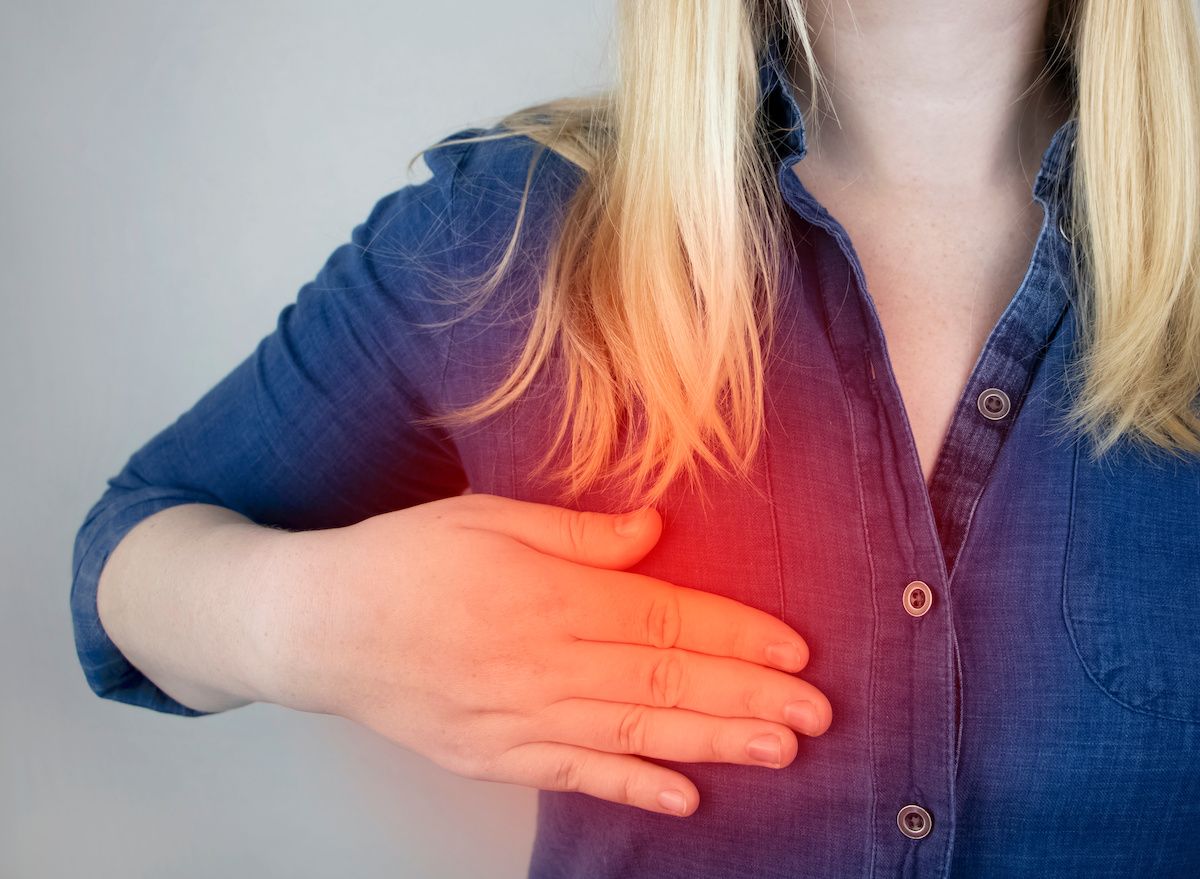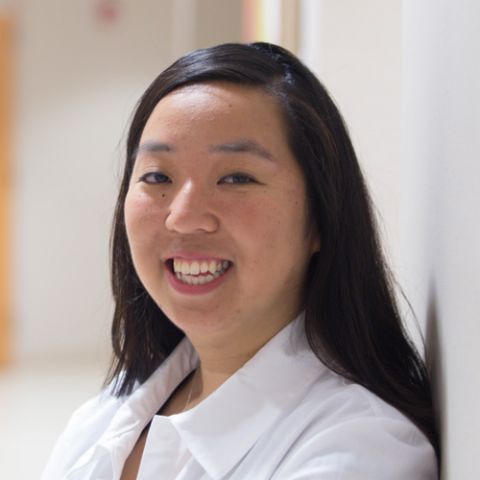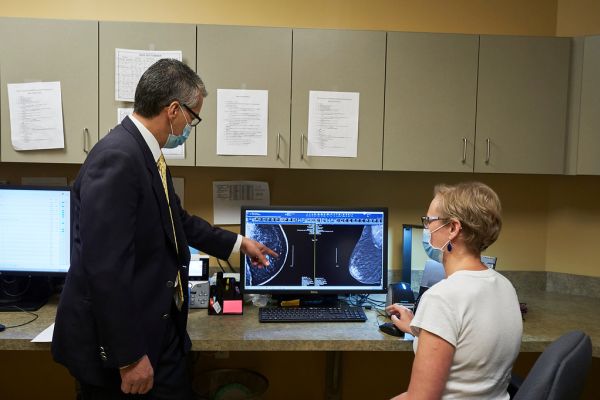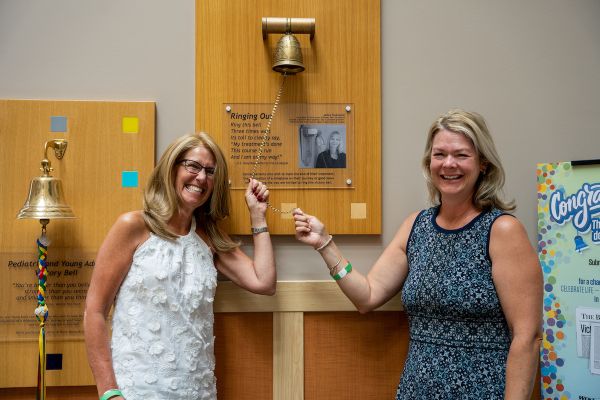While managing your overall health, it’s important to know your body. By performing regular self-examinations — like that of the skin or breasts — any changes you notice should be taken seriously.
If you do notice a change, specifically in the breast, this can lead to a spiral of questions and concerns. Feeling a lump in the skin of the breast is scary, but before you jump down the rabbit hole of what this could mean, there are a few important symptoms and risk factors to recognize first. While it’s easy to fear the worst, this may be a simple and treatable infection called mastitis.
Symptoms of mastitis
Mastitis is inflammation of the breast, typically caused by an underlying infection, like an abscess under the skin, or a clogged milk duct in people who are breastfeeding. You may experience pain in the breast in addition to other symptoms that are easily spotted. “Usually the skin becomes redder, warmer and it will feel a little thicker,” says Jessica Young, MD, breast surgeon at Roswell Park Comprehensive Cancer Center. “You may have some tenderness in the area or develop a fever and chills if the infection progresses. If there’s an underlying abscess, you might even feel a lump.”
Similar to when the body is fighting any infection, like a cold or COVID-19, mastitis can also lead to swollen lymph nodes, most commonly under the arms or around the neck.
While mastitis can be diagnosed in anyone — women, men, people who are breastfeeding and those who are not — it most commonly occurs in someone who is breastfeeding. An oversupply of milk can lead to the narrowing of the milk ducts, causing a blockage that can eventually become an infection. In a person who is not breastfeeding, mastitis can be caused by something as common as an ingrown hair, a sebaceous cyst or a blocked duct.
Luckily, this infection of the breast is easily treated. “Mastitis comes on quite quickly, but will usually go away with antibiotics,” says Dr. Young. “Typically, if the infection doesn’t resolve after one or two courses of antibiotics, that is when they’ll be referred to us, to check that it’s not something more.”
Why Roswell Park for breast cancer?
We offer treatments at the forefront of cancer care, plus clinicians with the knowledge and experience to utilize them.
Learn moreMastitis vs. inflammatory breast cancer
Inflammatory breast cancer is a rare subtype of breast cancer, explains Dr. Young. “Unfortunately, this can sometimes be mistaken for an infection, since the symptoms are so similar.” These symptoms, very much like mastitis, include swelling, redness and thickening of the skin of the breast, as well as feeling warm to the touch.
“Patients may be on antibiotics for weeks before they realize it’s not getting any better,” says Dr. Young. “If this is the case, the next step may be to do a biopsy of the skin.”
While a lump caused by mastitis will not normally show up on a mammogram, the imaging exam will note that the skin may be thickened, further adding to the crossover of symptoms between mastitis and inflammatory breast cancer. It is for this reason that a biopsy can be necessary for diagnosis; the tissue from the small biopsy is examined to determine if the breast tissue does in fact show signs of cancer. “Inflammatory cancer is very aggressive, so we want to start treating that as quickly as we can,” explains Dr. Young. “But it’s important to say that mastitis is super common, while inflammatory breast cancer is very rare.”
If you have been treated for an infection of the breast that hasn’t gone away after multiple rounds of antibiotics, it’s important to seek out a second opinion. “Because inflammatory breast cancer is rare and tricky to diagnose, it’s important to seek an expert opinion at Roswell Park,” explains Dr. Young. “We see this condition more commonly and have the resources to diagnose quickly.”




